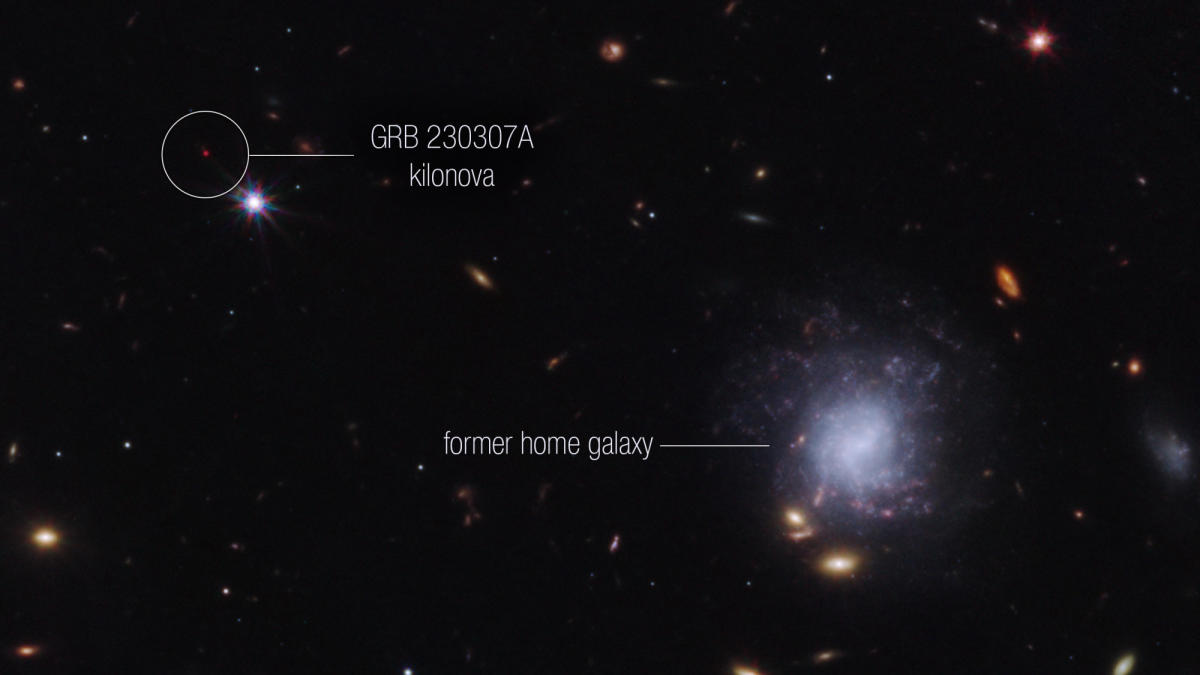Astronomers using NASA’s powerful James Webb Space Telescope (JWST) have recently discovered tellurium, an element that is even rarer than platinum on Earth. This element was found in the aftermath of two dense stellar corpses located approximately 1 billion light-years away. The discovery of tellurium could provide valuable insights into the processes that create precious chemical elements in the universe.
“After more than 150 years since Dmitri Mendeleev presented the periodic table of elements, we are finally able to fill in the gaps and gain a comprehensive understanding of how everything is formed, thanks to the capabilities of the Webb telescope,” said Andrew Levan, the lead author of the study and a researcher from Radboud University in the Netherlands.
The scientists believe that the neutron stars, which were observed by the James Webb Space Telescope, were originally massive stars in their home galaxy. When one of the stars reached the end of its life and exploded as a supernova, it was propelled out of its galaxy and ended up 120,000 light-years away. The second star followed suit.
Related: James Webb Space Telescope spots violent collision between neutron stars
Despite being forcibly expelled from their galaxy, the neutron-star duo remained gravitationally connected and eventually merged into a single entity hundreds of millions of years later. This merger was observed on March 7th of this year.
“This type of explosion is incredibly rapid, causing the ejected material to expand swiftly,” explained Om Sharan Salafia, a co-author of the study from the INAF-Brera Astronomical Observatory in Italy.
The violent merger, known as a kilonova, triggered a gamma-ray burst (GRB) that was observed by scientists on March 7th. It was the second brightest GRB ever detected since the study of these phenomena began 50 years ago. The explosion was initially spotted by NASA’s Fermi space observatory and lasted an unprecedented 200 seconds, compared to the usual two-second duration of previous star mergers.
Related Stories:
— Scientists spot a ‘kilonova’ flash so bright they can barely explain it
— Astronomers identify 1st twin stars doomed to collide in kilonova explosion
— Exotic ‘stripped stars’ may be missing link on path to powerful kilonova explosions
Fermi, Webb, and the Neil Gehrels Swift Observatory all observed the bright flash and worked together to determine its source. Webb’s observations of the aftermath allowed scientists to identify the presence of tellurium in the cloud of material surrounding the merger. This discovery marks another major milestone for the historic James Webb Space Telescope.
“Webb’s capabilities are extraordinary and may even lead to the discovery of even heavier elements,” said Ben Gompertz, a co-author of the study and a professor at the University of Birmingham in the U.K. He added that the observatory’s abilities will transform our understanding of the universe.
This groundbreaking research is detailed in a paper published on October 25th in the journal Nature.


